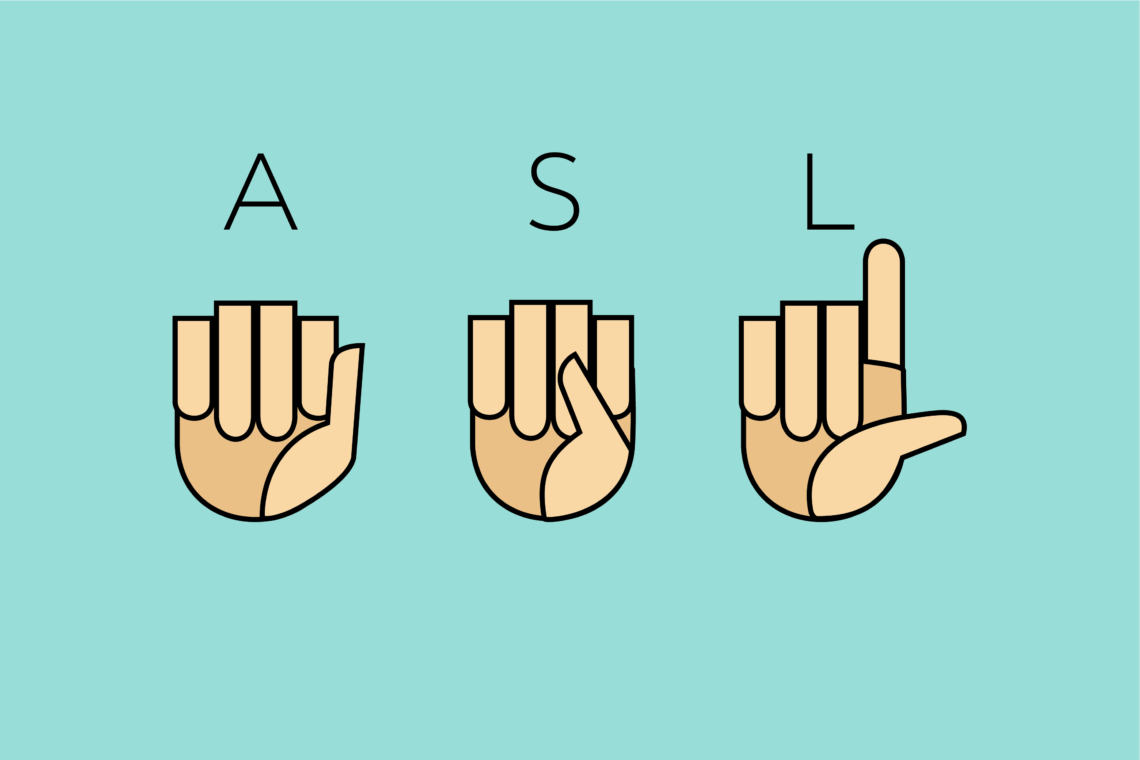Creating an enriching experience for second language learners is important to the potential success of student understanding. Supplying students with multiple strategies to build understanding of a second language is crucial. Due to the fact that students come from varying backgrounds and hold individual skills and abilities, teaching with an array of techniques is the most effective. In doing so, the teacher is more likely to reach a students’ needs in their learning. Many children find success in learning when there are supplemental visuals or hands on components, rather than just the abstract. Language, especially spoken, can be a very abstract concept when it is first being learned. This brings forth a question; how can the abstract component of an unknown language being learned become more concrete and understandable for learners? One approach to this is the use of American Sign Language (ASL). It was during my practicum that I was exposed to a unique teaching style for French in a grade 6/7 class. The teacher would teach French to her English-speaking students with the use of sign language. The learning I saw during this time was very interesting and helped to mold this inquiry. This paper will speak to the importance of unpacking the abstract aspect of a second language to a more concrete form, how to build a connection to a second language in accompaniment with gestures relating to English, and the benefits of using sign to further create lasting understanding and stronger communication skills.
When focusing on learning a second language for children it is important to look at what will provide the greatest amount of understanding. It is easiest for children to build this understanding when information can be related to their physical environment and own life. This is because these things are tangible and visible, students already have a connection built within these fields. In regard to this, language that is unknown to them may pose as a daunting challenge. During the beginning stages of this learning new words may often just sound like sounds to learners. In other words, these unknown words have no meaning and therefore the leaner cannot create a connection to it.
Supplementing this learned language with gestures, sign language, allows students to form a more concrete understanding of word meaning. This also allows students more ways to communicate and use such cues to help further learning without relying on English. Within the article “Variations in Phonological Working Memory: Linking Early Language Experiences and Language Learning Outcome”, the authors state:
[Dual] language exposure constitutes a form of enrichment that can enhance phonological processing and, in particular, PWM [phonological working memory] is attested to by a number of studies… but these effects are conditional on proficiency and AoA [age of arrival] (Pierce et al. 23).
The argument could be made, then, that if second language learners are taught with the supplement of sign language at an early enough stage and with an enriched educational approach then their probability of success increases.
The article “Sign Language and the Brain: A Review” describes an interesting viewpoint on first language learning in comparison to the addition of learned sign language and these components effects on the brain. The authors describe:
…written English is learned as a second language form by hearing people, building on the individual’s knowledge of the spoken language. These differences, rather than any intrinsic characteristics of speech and sign, may have led to the conclusion that signed language might activate the RH [right hemisphere] more than reading (Campbell et al. 9).
The notion of signed language being able to better access various regions of the brain, and therefore reciprocate into varying degrees and depth of learning, is also supported within this same article during a study. “Auditory cortex in the superior temporal lobe was activated more by spoken language, whereas parts of visual cortex (posterior and inferior temporal, and occipital regions) were activated more by signed language” (Campbell et al. 8-9). It could be understood, then, that a second language supplemented by sign language could help access different areas of the brain and possibly create a stronger foundation of understanding.
When teaching a second language it is hard for beginning learners to understand instructions related to the learning only spoken in the second language. Due to this, teachers will often speak in a mixed language form that uses both the native and second language. For example, in an English-speaking class that is learning French, a teacher may use a form of “Franglais” while teaching. This allows students to begin to piece together where French words and sentences fit into their English language structures. The incorporation of signed language acts as a similar feature. When students learn new second language words with the correlating sign gestures both the students and teacher have multiple ways of communicating. The signed language also acts as a visual cue that represents both an English word and French word, when looking at French L2 learners. This may allow for students to better remember words as they relate to signs as well as allow for the teacher to communicate to students without verbalizing answers. This idea of teaching students sign language along with new vocabulary words may help to create a prompt or cue for students as well as create a memorization technique. In the article “Giving Memory a Hand: Instructing Children to Gesture Enhances Their Event Recall” this notion is supported as such:
Instructing children to gesture may benefit recall by reinstating the originally encoded experience in memory, thereby providing nonverbal retrieval cues that may guide the child’s search of memory (Liwag & Stein, 1995; Ratner et al., 2001), and may also improve children’s ability to communicate their experience…( Stevanoni & Salmon, 2)
The supplemental addition of gestures in congruence with second language word acquisition could be argued, then, as a positive form of dual coding learning. Students are given a gesture that relates to a word and therefore acts as a symbol for later recall. This form of teaching and learning is also seen in the younger primary ages, especially within a song form with actions. This understanding of sign language as a means to provide students more ways of communicating is also supported in the article “Let Your Fingers do the Talking: Hands-On Language Learning Through Signing” as such:
Because the signs are universal, sign language facilitates communication on multilingual classes. Sign language also provides visual cues so that children learn it faster than speech. Moreover, children who learn signing simultaneously with spoken language have an alternative means of communicating (Good et al., 1).
The argument could also be made that some children may respond positively to learning a second language with sign as an accompaniment as it is also a form of movement, expression, and play. Students are often intrigued by new things and activities and this form of teaching may attract a form of excitement during learning.
Another key feature in using sign language in accompaniment with L2 learning, and even just within regular everyday learning, allows for an inclusive form of teaching. This is especially true when there are students with hearing impairments in a class. This understanding is again supported in the article by Good et. al as they write, “…teaching sign language to all students is an inclusive technique that facilitates mainstreaming of hearing-impaired children. Signing also has potential as a method of communication in a multilingual class because signs can function as one common language” (5). By supplementing second language learners with sign language the class, as a whole, gains more opportunity to establish stronger understanding.
This inquiry to understanding if there are, in fact, significant positive outcomes and success to learning a second language with the accompaniment of sign language has proved useful. Through the research conducted by means of read articles and studies to unpack this inquiry it could be said that there is no definitive answer to the question pertaining to this paper. The effects of ASL in L2 learning is quite inconclusive. However, in a positive light, the research used did not suggest that using a form of sign language to help supplement second language learning was negative or damaging to students’ overall learning. Due to this finding, it could be argued that the addition of sign language provides students an alternative platform of learning a second language as well as present the possibility of establishing enriched learning in other fields of study.

April 7, 2021




